News & Articles
Browse all content by date.
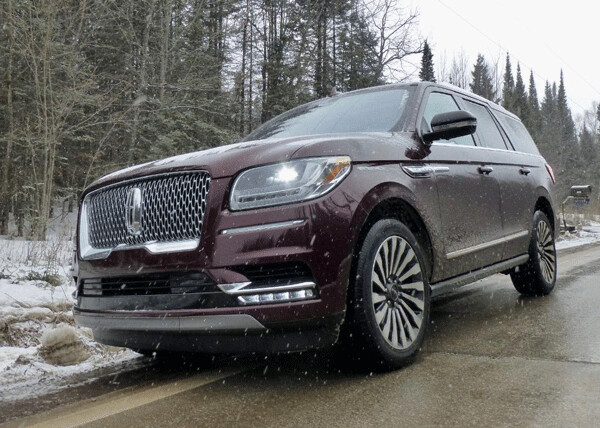
It’s like if you were going to rent a plane for a private charter trip to a tropical vacation, would you prefer a single-engine 4-seater, or a 747?
No, wait a minute. They’ve discontinued the 747, so we can’t charter one.
But then again, they discontinued the Lincoln Navigator a while ago, when it was going to join the Escalade, Suburban, and other fancy monster SUVs in the last fuel economy scare, and it’s back. So maybe there’s hope for the 747, too.
Back in January at the Detroit Auto Show, I voiced my concern that the expanded awards from car and truck of the year to add utility of the year would dilute the whole process. Nobody cared. Then they said the three truck of the year candidates would be the Colorado cladded off-road midsize pickup and the Ford Expedition and Lincoln Navigator, both of which used to be large utilities by anyone’s measure, would not be evaluated as trucks, because they were body on frame.

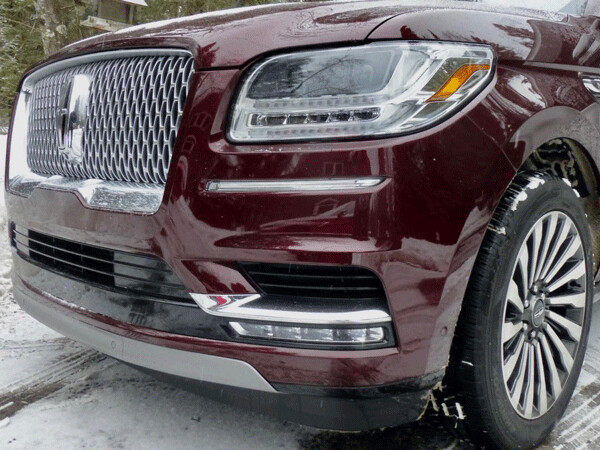
Whatever. But in reality, the Navigator won truck of the year. I remained a skeptic right up until a recent week when a new 2018 Navigator 4x4 Reserve was delivered for me to road test. It was shiny black, as anyone could tell from a glance out the window. Except it was not. When you got close, you could tell it was a subtle not-quite-black dark color, with some red to it.
Officially, it was listed as “Burgundy Velvet Tinted Clear Coat,” and it was stunning, making the bright chrome grille and stylish 20-inch alloy wheels jump out at you.
Your first impression is that this is a bii-ii-iig SUV. Gigantic. It is so big that when I later saw one from a distance, the view from the rear corner made me think I was looking at one of those new gigantic Suburbans. THAT big.
Walk up and stand next to it and the Navigator will dwarf you. It is76.1 inches tall, with a 221-9-inch length and 131.6-inch wheelbase, and a 79.9-inch width. At 6,330 pounds, the Navigator can tow 8,100 pounds of trailer.
Part of its illusion of size, which is no illusion but more fact, is the flashy wheels are 9.5-inches wide and 22 inches in circumference. Now, we aren’t going to estimate the price, but let’s assume buying replacement 22-inch tires will cost more than a reasonable consumer might be interested in paying.
However, I do have to restrain my usual sarcasm when dealing with trucks or SUVs I would normally accuse of being too big, because people are plunking down enormous quantities of money to buy these beasts. And the fellow in the White House is ordering his new EPA puppet to roll back former President Obama’s strict emission and fuel economy standards, to the applause of all the U.S. manufacturers who want nothing more than to unleash the largest of large trucks with the least economic of engines in a return to the 1970s, presumably.
Interesting, but one of the most impressive things about contemporary cars and trucks is that these companies continue to make higher and higher technology engines that produce more and more power yet still get more and more miles per gallon. Somehow, U.S. manufacturers would trade all that for cheaper-to-build, less-efficient engines that are more foul-running and will pay no regard to fuel economy.
The test Navigator provided a sticker sheet that discreetly neglected to list a base or as-tested price. Checking a few car magazines, we can deduce that a Navigator will cost a base price of about $75,000 up to about $98,000, with gusts up and over the magic $100,000 barricade.
Seems to me, prices like that could make foreign-make engines and the vehicles that come wrapped around them more popular, simply because intelligent people might prefer 30-plus miles per gallon to 15. But we can just wait to see if the U.S. manufacturers cut the sticker prices of these giant SUVs once the EPA says they can make less costly engines.
More than that, however, companies like Ford have already made the plunge to high-tech, and they have done a good job, mostly. The Navigator, for example, comes with a 3.5-liter V6 EcoBoost engine, which means it is twin-turbocharged and can be tuned to turn out a lot of power. The test vehicle shows 450 horsepower at 5,000 RPMs, and 510 foot-pounds of torque at 3,500 RPMs from its 3.5-liter V6. That is more horsepower than Cadillac can extract from the 6.2-liter V8 in its 6.2-liter V8.
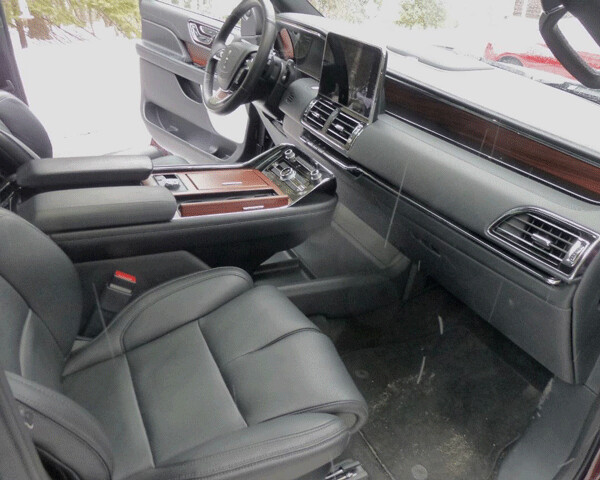
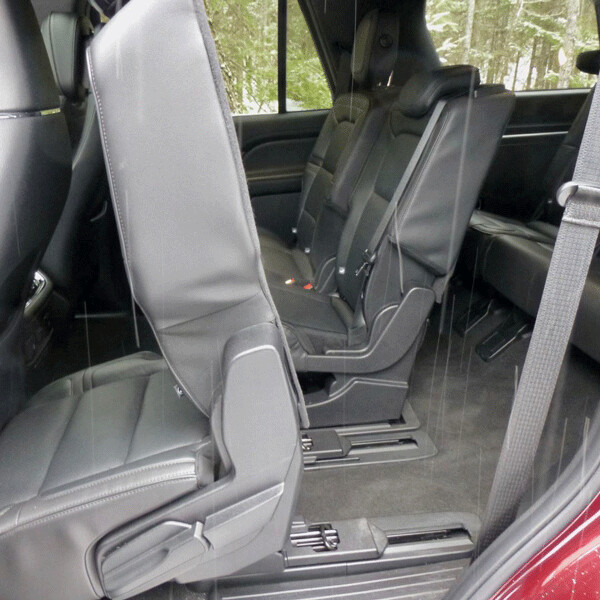
Once you open the door on the Navigator, you realize how happy you are to spot the grip handles to let you pull yourself up and in. That’s before you spot the moving running board that is coming out to meet you. Handy.
The black leather front bucket seats are wide and comfortably supportive, and as you settle into it and start fiddling with the 30-way electric adjustments, you are also taken by the overriding feeling of luxury, which is everywhere.
And then you push the button and start the Navigator, and all you need is someone to point to where the gearshift might be located. The 10-speed automatic with overdrive is shifted by a thin, horizontal row of push-buttons, located along the lower edge of the radio-navigation screen and above the lower dash-center stack-console area where you might expect to find a modern shifter.
Worked great, though, and it shifted readily with the paddle shifters on the steering wheel.
Driving the Navigator was easy and for such a big beast, it handled well and gave back only moderate sway, which you could eliminate by switching the mode switch from normal to “excite,” which tightens the steering, stiffens the suspension and holds shift points.
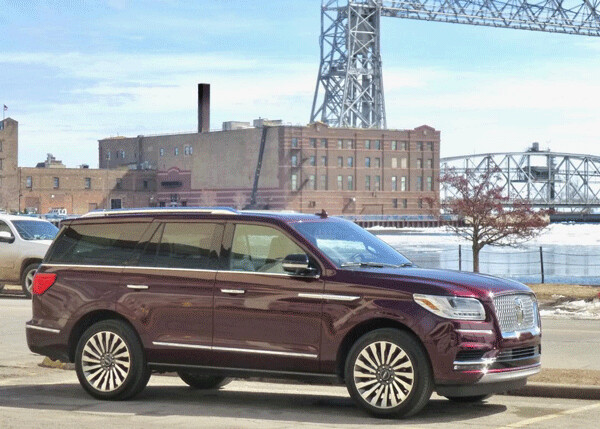

A panoramic sunroof adds to the luxurious feel, and while it performs well, you also feel guilty if you have fewer than six occupants. Opening the rear door shows off a roomy second row area, with a fold-down center armrest to go from three seats to two and a console, but one of the neat features is that when you want to put someone — and we’re talking children or adults — into the surprisingly roomy third-row seat, you fold the outer second-row seats forward and it slides what seems like a foot forward, which opens up an easy-access opening to hop in the far rear.
I had fun wrestling with the second-row seats, then I learned that there is a power switch that controls fold-tip-slide action.
Naturally, the Navigator has all the latest safety gadgets, for lane warning and control, surround view of any and all things approaching from any and all directiuons, a 20-speaker audio upgrade, and all the connectivity gizmos you might want, including some things you didn’t know you wanted, like a wireless charging pad.
What would you expect from the truck of the year in a year when big trucks are making a big — and we mean BIG — comeback.
| Tweet |


